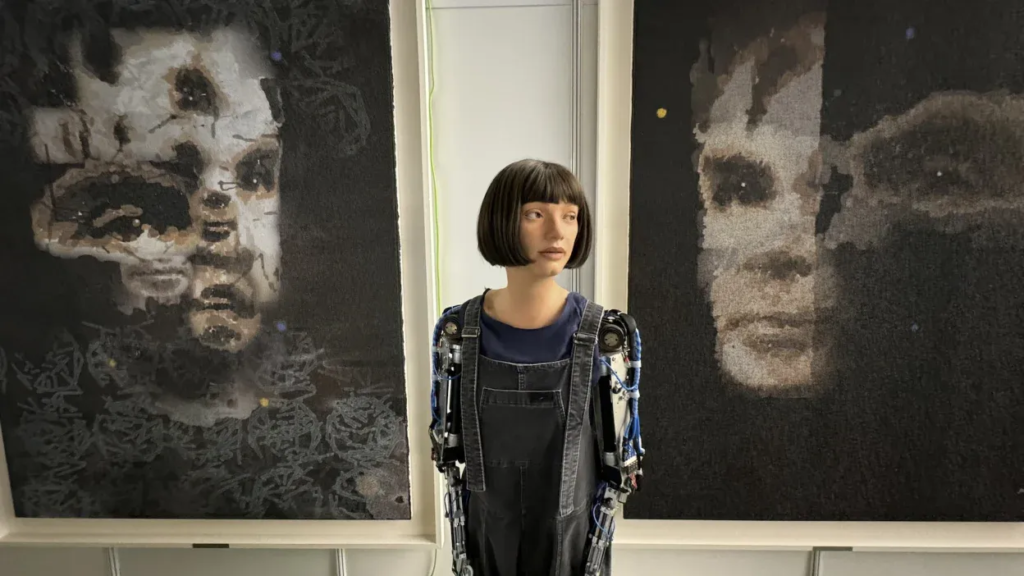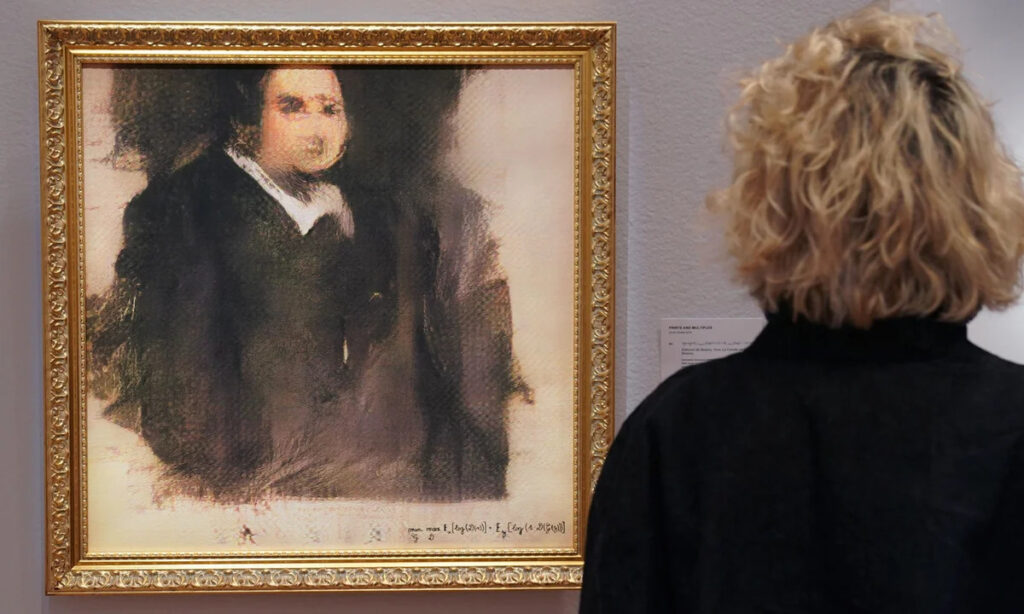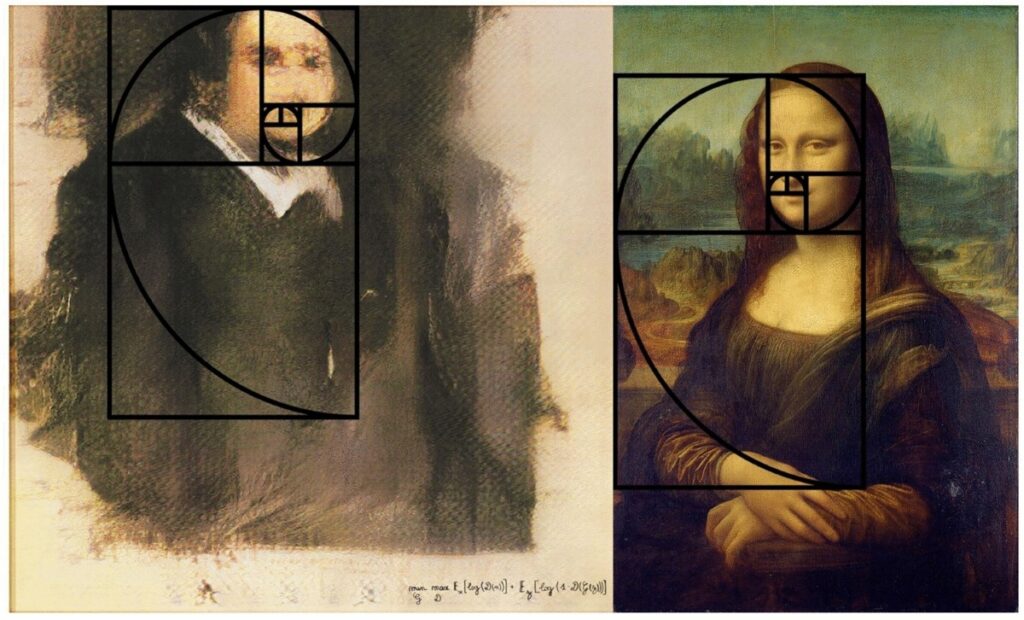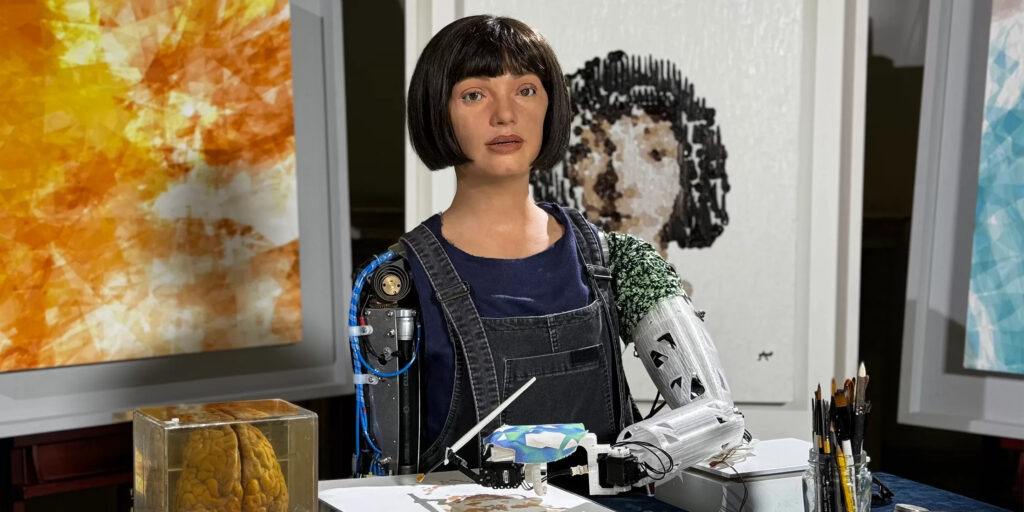In 2024, the fusion of art and technology once again captured global attention. From October 31 to November 7 , the prestigious Sotheby’s auction house in the UK hosted a groundbreaking event—an exhibition and auction featuring “The God of AI,” a painting created by AI artist Ai-Da. According to Xinhua News Agency, on November 8, this astonishing artwork was successfully sold for a staggering $1.08 million, marking a significant moment in the evolution of AI-generated art.
An AI-Generated Masterpiece Breaks Records
Can humans and artificial intelligence (AI) reach the same artistic heights? This towering 2.2-meter painting, initially valued between $120,000 and $180,000, quickly drew interest from collectors. On the very first day of bidding, it received an opening bid of $120,000, a testament to the growing acceptance of AI-generated art in high-end auctions. The sale of “The God of AI” represents a historic milestone, where AI and human creativity merge in unprecedented ways.

This event was particularly noteworthy as it marked the first time a robot artist had been officially recognized by a major auction house. The bidding war for “The God of AI” saw 27 bids before being acquired by an anonymous buyer, further cementing the significance of this sale in the art world.
The Evolution of AI Art: A New Chapter in Creativity
AI’s role in art isn’t new, but its impact is growing exponentially. Back in 2018, the AI-generated painting “Portrait of Edmond de Belamy” shocked the world when it sold for $432,500. Created by the French collective Obvious, this artwork was generated after an AI model analyzed 15,000 portrait paintings from the 14th to 20th centuries. While it demonstrated AI’s capacity for artistic creation, “The God of AI” pushes the boundaries even further.


The mastermind behind this latest milestone is Ai-Da, a humanoid robot developed by British gallery owner Aidan Meller, in collaboration with Engineered Arts and Oxford University. Ai-Da’s name pays tribute to Ada Lovelace, the 19th-century mathematician regarded as the world’s first computer programmer. Since her debut in 2019, Ai-Da has made waves in the art scene—painting a portrait of Queen Elizabeth II, delivering a speech at the UK Parliament, and even holding a solo exhibition at London’s Design Museum in 2021. Her continuously evolving skills are redefining what AI-generated art can achieve.
Creativity vs. Automation: A Debate Sparks Global Discussion
The record-breaking sale of “The God of AI” is not just a financial triumph—it has reignited conversations about the nature of creativity, imagination, and authorship in the digital age.
Shen Linfeng, a professor at China Academy of Art, praised Ai-Da’s work, noting that her technique blends Impressionist pointillism with modern abstract aesthetics, producing a truly captivating visual experience. He described the painting as “intriguing, innovative, and thought-provoking.”
However, not everyone is convinced. Shen Huaqing, deputy director of the Design and Art Department at Zhejiang University, argues that Ai-Da lacks true artistic consciousness. He points out that her works heavily borrow from existing artistic styles, making originality a subject of debate. “Ai-Da is not human—her works do not emerge from personal experiences or emotions, so they cannot be compared to human-created art,” he asserts. He further suggests that buyers are investing in the novelty of AI-generated art rather than its intrinsic artistic value. Using an analogy, he remarks, “Just as a replica of the Mona Lisa can never match the value of the original, a second ‘God of AI’ wouldn’t hold the same appeal.”
AI and the Future of Art: Collaboration or Competition?
The rise of AI-generated art has forced artists and creators to rethink the role of technology in artistic expression. Pablo Picasso once said, “Good artists copy, great artists steal.” But in the AI era, this notion is being fundamentally redefined.

According to Jin Yudong, a 3D visual expert, AI demonstrates “emergent intelligence”—where technological advancements lead to dramatic leaps in creative capability. AI models analyze vast datasets, refine artistic techniques, and even develop their own interpretations, allowing for more nuanced and sophisticated artistic outputs. This is reshaping the creative landscape, making AI-assisted co-creation an increasingly viable model, where artists conceptualize and guide, while AI executes and enhances the vision.
For instance, Yuan Bo, an AI-generated content (AIGC) artist, describes AI as a collaborator rather than a competitor. He notes that AI eliminates the need for endless sketches, allowing him to focus on pure imagination and artistic direction. Similarly, Hong Kong-based artist Wong Hongda has developed an AI painter named Gemini, capable of autonomously creating traditional Chinese paintings without any human intervention.
However, alongside this creative revolution, copyright concerns loom large. Many artists worry that their original works are being used as training data, diluting their uniqueness and economic value. In response, major publishers such as Penguin Random House have explicitly prohibited their books from being used for AI training. Furthermore, on October 22, 2024, over 15,000 artists, writers, and musicians signed an open letter denouncing AI companies for exploiting creative works without permission. They argue that such practices pose a “significant and unjust threat” to the livelihoods of creative professionals.
Can AI Ever Replace Human Creativity?
Beyond copyright disputes, the ethical implications of AI-generated art remain hotly debated.
Supporters see AI artists like Ai-Da as expanding the horizons of creativity, offering new perspectives, and blurring the lines between human and machine-made art. They argue that AI’s capabilities challenge traditional artistic norms and push creative boundaries in unprecedented ways.
However, critics insist that AI lacks genuine emotional depth and cultural authenticity. They argue that AI merely repackages existing artistic elements, lacking the personal experiences, emotions, and cultural context that make human-created art so powerful.
Embracing Innovation While Honoring Tradition
Despite ongoing debates, AI-generated art is undeniably here to stay. Ai-Da’s influence extends beyond art—she has even lectured graduate students at Zhejiang University, sharing insights on creative technology applications. Such interdisciplinary collaborations inspire both artists and technologists, fostering new artistic innovations.
As AI continues to shape music, literature, and film, the creative landscape is evolving. For instance, AI-powered Suno, often dubbed “the ChatGPT of music,” can now generate full songs with lyrics and melodies, breaking creative barriers and democratizing artistic expression.
However, while embracing AI’s potential, we must also preserve the cultural and artistic integrity of human creativity. As philosopher Lewis Mumford once said, “Technology is only one element of human culture.” AI-generated art may be powerful, but its true potential lies in its harmonious integration with human ingenuity, tradition, and emotional resonance.
Moving forward, the challenge is to ensure that art and technology evolve together—respecting heritage while embracing the future.
